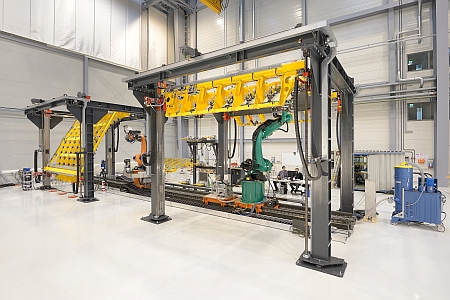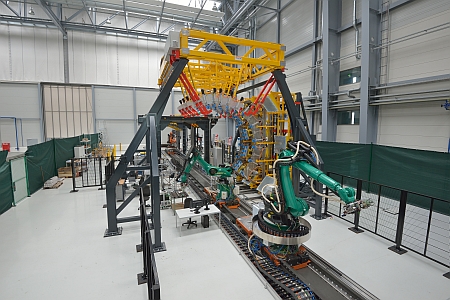From concept to production plant
In close collaboration with customers and taking into account their requirements, Fraunhofer IFAM scientists develop joining processes for lightweight structures on up a 1:1 scale. They also develop customized, integrated production and plant concepts right through to large production scale plants. They solve production shortcomings by, for example, accelerating assembly processes by reducing adhesive curing times and implementing process automation, whilst simultaneously making cost-savings. The researchers also develop customized application systems and processes for sealants and also fillers for shimming, along with respective application units that are usually robot end-effectors.
Consideration of the adhesive properties
The Fraunhofer IFAM experts develop solutions for the automation of bonding processes hitherto carried out manually, where it is desired to keep using the same adhesive: This involves the automation of complex manual actions and automated feeding, mixing, and dosing of adhesive systems that were not developed for automated processing.
 Fraunhofer Institute for Manufacturing Technology and Advanced Materials IFAM
Fraunhofer Institute for Manufacturing Technology and Advanced Materials IFAM
